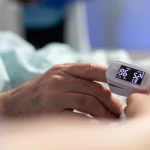What Are the Facts?
A pulmonary embolism (PE) is a blockage in your pulmonary arteries, usually caused by a blood clot, but occasionally caused by an air bubble, a tiny piece of a tumor, or a bit of some other body tissue that has somehow broken free and escaped into the bloodstream. A common cause is Deep Vein Thrombosis (DVT).
The pulmonary arteries are the gateway to the lungs from the heart– all of your blood must be oxygenated in the lungs so that it can carry oxygen to the rest of your body. When blood flow to your lungs is blocked, the consequences can be serious:
- Pulmonary hypertension
- Damage to the lungs that can cause poor lung function and long-term problems like pulmonary hypertension
- Reduced oxygen levels in your blood
- Permanent damage to other organs
PE and DVT can be preventable through lifestyle and wellness choices, and are survivable if caught early and treated promptly and effectively– but they can be fatal if you don’t take action right away. Fortunately, we live in a time of great medical advances, like recent updates in microcatheters and related technology– so pulmonary embolism should be a matter of awareness, not fear!
Should You Be Concerned?
You should take care to prevent PE and DVT. Because of some genetic and lifestyle factors, some people are at greater risk than others– but everyone should consider the following:
- Are you often unable to move for long periods of time?
- Have you recently had surgery or broken a bone?
- Do you have chronic high blood pressure, heart disease, or other conditions, like paralysis?
- Do you smoke?
Have You Had PE or DVT Before?
If your answer is yes to any of the above, you’re at greater risk than most people. Read up on the facts about pulmonary embolism before you talk to your doctor. Knowing the basics before you go can help you understand and follow your doctor’s advice more easily.
What to do if it Happens to You
Sometimes there are no symptoms, and PE is discovered during an exam for another condition. However, most people experience symptoms that come on suddenly.
PE symptoms can include:
- Unexplained shortness of breath; breathing problems
- Fainting or lightheadedness
- Irregular heartbeat
- Chest pain
- Coughing up blood
Symptoms of DVT can include:
- Swelling and pain/tenderness in one leg
- Unexplained red or blue skin discoloration
- Leg is warm to the touch
If any of this is happening to you, call emergency medical services immediately!
Updates in Microcatheters Offer New Hope to PE/DVT Patients
Thanks to advances in medical science, like new medications, prevention techniques, and recent research in vascular health, people who suffer PE and DVT are much more likely to survive and recover. Microcatheters are tiny, thin medical devices used for diagnosis and treatment and have come a long way in recent years, and updates in microcatheters are especially promising for the treatment of PE/DVT. If you’re concerned, speak to your doctor and remember, there is hope!







